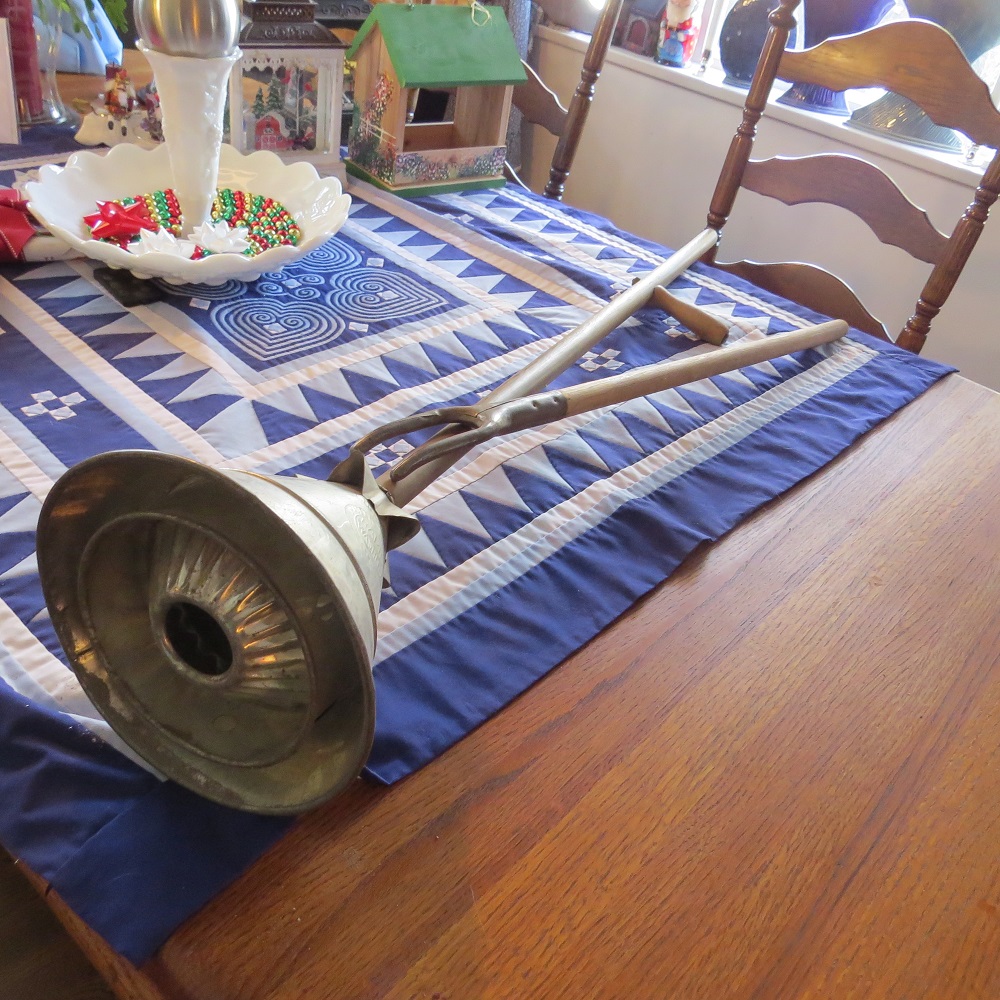In my last blog, I described the washing I did the day I tracked my activity. A friend said that was too many loads of wash. She said, she just took all of her wash, loaded it into the machine (without sorting by color, texture, and materials). One load and no steps. That provoked my thinking about my experiences with washing – clothes, bedding, etc. When I expressed surprise to Sister Clara, she reminded me that my friend could wash her laundry any way she wanted to! And, of course, she is correct.
I remember as a young child, being in Palisade with my parents and little sister. Our parents were picking peaches, and we were in lodging that was made of four-foot panels around a concrete floor with screens for windows and canvas tent for a roof. And, a single light bulb hanging from the ceiling in the middle of the tent. We were there for about a week. As I remember, I was in charge of some of the cooking – I’m not sure what I cooked, but I think that was when I learned to use a camp stove for cooking. Anyway, I also was responsible for washing our family’s clothing. Apparently, harvesting peaches is dirty work. And, I washed the clothing by hand; there were no washing machines in the camp.
At home, my mother, of course, did all of the washing for our family (women did, in those days). Seven people, parents and five daughters. I first remember her washing in the 1940s. We had no water heater. No washer attached to hot and cold water hoses with a drain hose. My mother’s washing machine was round like a barrel, green enamel machine on wheels with the wringer attached at the side on top of the machine. The wringer could be swung around, away from the position above the machine to handle the clothes as they came out of the rinse tubs.

This was a great step up from when she washed men’s clothes at a boarding house – by hand. She may have used the “agitator” that I’ve pictured here, manually sloshing the water and laundry about a tub of hot water. Certainly, she would have used lye soap; probably lye soap that was made at home. Nothing was from a store. Hot water was an important feature of clothes washing, at that time I remember in my home. But, as I said, we had no water heater.
We did have a kitchen cook stove with an attached water reservoir. It took some time to get the volume of water hot. Mom would start the wood stove (she actually used coal); the heat would transfer to the water reservoir on the end of the stove. When the water was hot, she would dip water into the round, barrel-like washing machine, add the soap (again, probably, lye soap – Sister Clara remembers how cracked Mom’s hands were), add the clothes, and start the agitator that was inside of the machine. After the clothes agitated as long as she thought they should, she would use her stick (about three-feet long) to fish the clothes out of the water and put them through the wringer. Into the cold water in the rinse tub. The wringer was really good at popping buttons off of blouses – even breaking them, at will.
And, then, of course, all was hung on the clothes line outside in the warm or freezing air, depending on the season. In the winter, the frozen wash was brought into the house where it finished drying beside the cook stove. I always thought of this drying the frozen wash was the beginning of clothes softening. They were very soft after being put through this process.
We talked about starting out by washing in hot water. Of course, working through the many loads of wash, the temperature of the water cooled so that the last load was washed in cold water. Also of note is that the order of washing loads was: first, white and light-colored wash; next, darker clothes, and so forth, until my father’s overalls (darker, dirtier, and heavier) were washed, last. Clara remembers our mom working over a boiling tub of water in the back yard, washing our dad’s dirty, greasy overalls Wash day continued by somehow getting the dirty water out of the washer and the rinse tubs. I don’t remember how that hap5pened, but I can assure you that it wasn’t an easy task. Washing was finally finished when the tubs and the washer were stored to wait for the next wash day.
I don’t remember when the wringer washer disappeared and a more modern top-loader washer came into the house. It was like having something magic show up. No carrying hot water from a reservoir to the washer; or using the water in an outside hose heated by the sun. No manual, back-breaking labor to get the washing finished.
At that time, the cleansing agent (a powdered soap) was washer detergent that came in boxes and, later plastic bottles (with lots of water in the mix -so we paid for a lot of water, rather than soap). We were still using hot or warm water for washing and cold for rinsing. And, we had water heaters to make hot water that was dumped into the washer through hot and cold hoses and removed by a drain hose. How easy was that! And. we were still hanging clothes on the line, hoping not to drop them in the dirt.
Have you ever thought about why we call soap operas, soap operas? Apparently, while doing wash in the “olden days,” ladies would listen to radio programs sponsored by soap companies. Hence – soap operas. Ted Kooser’s** poem, “Depression Glass” (in Delights and Shadows) tells about the pink glass dishes (cups, saucers, and such) that were found in boxes of soap as gifts.
Today, we have indoor dryers, as well as washers. We also realize that cold water works just as well for cleaning as hot. And, the clothes washing detergent has much less water in it. In fact, I use a product that is a three by five sheet, 1/16 inch thick. It completely dissolves in the water. No water to spill, at all. I wish I had that when I was in college. I spilled a lot of stuff on the floor in the laundry room at school.
Personally, I still sort my laundry – whites and certain colored clothes; darker clothes (dark sweaters, then trousers). I always wash bedding in hot water – there are tiny, tiny critters in the sheets, you know. And, if your dog sleeps on your bed, as mine does, you have a “dog sheet” on top of all of the bedding to protect it. I think there must be a special place in heaven for the person(s) who invented the Color Catcher for the wash and the wool balls to put into the dryer (rather than single-use dryer sheets).
My physical therapist wants me to wash one load per day. Because I have twelve steps to the basement where the washer and dryer are, that means I have to descend and/or ascend seventy-two steps for each load.
Sometimes, I think about all of the electrical appliances I have in my house, appliances that I use day in and day out. I play a game of which appliances could I get along without and which ones I can absolutely not get along without. I’ve decided that in addition to my microwave oven (an absolute necessity and #1 in my kitchen), I certainly would not want to have my clothes washer disappear from my life. Where I might have been able to do the washing by hand at one time in my life, today, I would not be able to wash sheets, trousers, etc. I’m not strong enough, any more. When it is out of commission, I really feel lost without it, and I get it repaired as quickly as possible!
Hooray for all of the changes and improvements that have been made in doing the laundry.

**Ted Kooser – my most favorite poet; twice the United States Poet Laureate.
Be Safe and Be well
The Cranky Crone
Thoughtful comments are appreciated.
3 replies on “Monday Wash Day”
It’s great to reflect on how much the time and labor it takes to do household chores has changed, freeing us up to do–what? Spend time online? In any case, I greatly appreciate the convenience of modern clothes-washing and microwave reheating.
I remember doing the washing with Grandma Becker on the farm before she got a “modern” machine. We used the washer with a wringer and a but for rinsing. She showed me how to run the clothes with button on them through the wringer. She had a special way for layering the material so that the buttons wouldn’t break. I don’t remember exactly how she did it, but I was amazed.
It took a long time to do the wash that way. She would talk about how she and her family had to wash in big tubs, fire, and long sticks. Every day would be a special chore day. Each day set up for something different: washing clothes, ironing clothes, baking, cleaning the house. We have things so easy these days. Why can’t I get my laundry done when the machines are right there in the kitchen? And, they are automatic???
Your other grandmother never had one of those “fancy” washers. And, never a dryer, either. I remember when Grandma Becker got the washer, and it was installed in that little (tiny, actually) room next to the back bedroom. That was your dad’s bedroom when he was a kid. And, he had a dog and the dog was allowed to sleep on the bed with him. I could hardly believe that because Grandma was so meticulous about keeping her house clean – and it really WAS clean. You know that saying, you could eat off of the floor? That was true about her house. But, your other grandmother always said, “If they’ve come to see my house, they’ve come for the WRONG reason!”